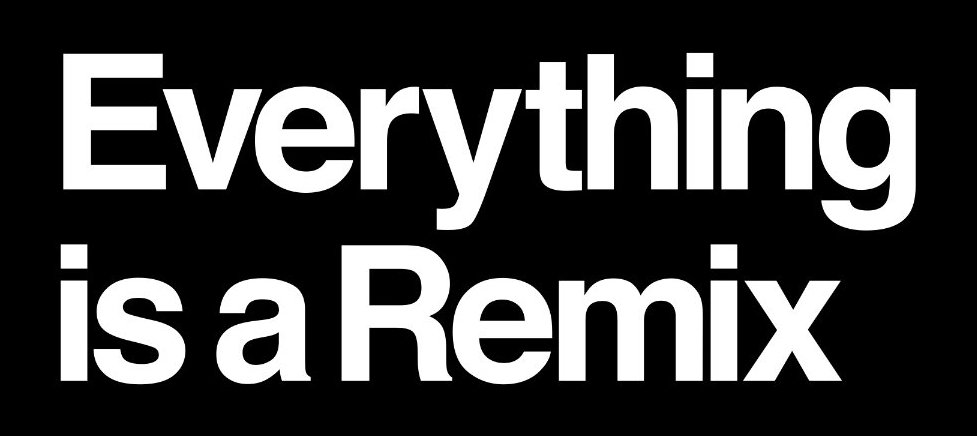EVERYTHING IS A REMIX: FAIR USE
Media is everywhere. Mostly we experience it through screens of various sizes. The stories we get through media connect us to a world beyond our direct experience.
And these stories shape our understanding of ourselves, of others and of the world.
Just like your body is influenced by the food you consume, your mind is strongly influenced by the media you consume.
Media is important. So we need to better understand it, we need to analyze it, we need to challenge it.
And this can require copying media in order to demonstrate your point.
But wait. Doesn’t copyright law prohibit making copies of other people’s media? How do you copy media legally?
In the United States, this kind of speech is protected by fair use. Fair use is the right to use copyrighted materials without permission for certain socially valuable uses.
You may have never heard of fair use but you’ve definitely seen it in action. It’s used in the news, in satire, in documentaries, and of course, it’s all over the place on YouTube. There’s vlogs, remixes, video essays, response videos, and parodies, which is when you copy something in order to criticize it. Parodies are often -- but not always -- humorous.
There are many kinds of fair use, but for creators it often means you are transforming media into something new. You are repurposing or changing it by adding new expression or new meaning. Fair use is rooted in the First Amendment. Without fair use, copyright would restrict freedom of speech.
Memes can be an example of transformative use. Memes often remix clips, add animation, or add titles in order to transform them into something new. Many memes can be considered fair use because they transcend their sources, becoming a kind of language of their own, and enriching cultural expression.
Whether your use is transformative or not can be tricky to determine without a lawyer. But there are two popular categories of transformative use that are easier for non-lawyers to use. These are criticism and commentary. In other words, making an argument or expressing an opinion.
So if your video is criticism or commentary, it should qualify you for fair use. But wait. This doesn’t allow you to just do whatever you want and make up some excuse for why it’s fair use, you have to practice fair use in a particular way. I recommend using this 3-step test for each clip you want to use:
#1 IS THE CLIP YOU ARE USING ILLUSTRATING A POINT?
Pretty simple: you need to have a good reason for using the clip. Like it provides an example that supports your argument, or it demonstrates what you mean. You can’t use it just because you like it or it’s entertaining.
#2 IS THIS POINT CLEAR TO THE AVERAGE VIEWER?
Anybody should be able to understand why you’re using the clip without you having to explain it to them.
And lastly, #3 DID YOU USE ONLY THE AMOUNT THAT WAS REASONABLY APPROPRIATE TO MAKE YOUR POINT?
You can’t use more of the clip than is relevant. So it can’t keep playing before or after you’ve made your point. Keep it as short as possible.
So if your video is criticism or commentary, including parody, ask yourself these three questions for each of your clips. If you answer “yes” to all three, you have a strong case for fair use. This isn’t the only way to do fair use, but it is a simple and effective way.
And that is how you can legally use copyrighted material you don’t own. That is how you can copy media legally.









